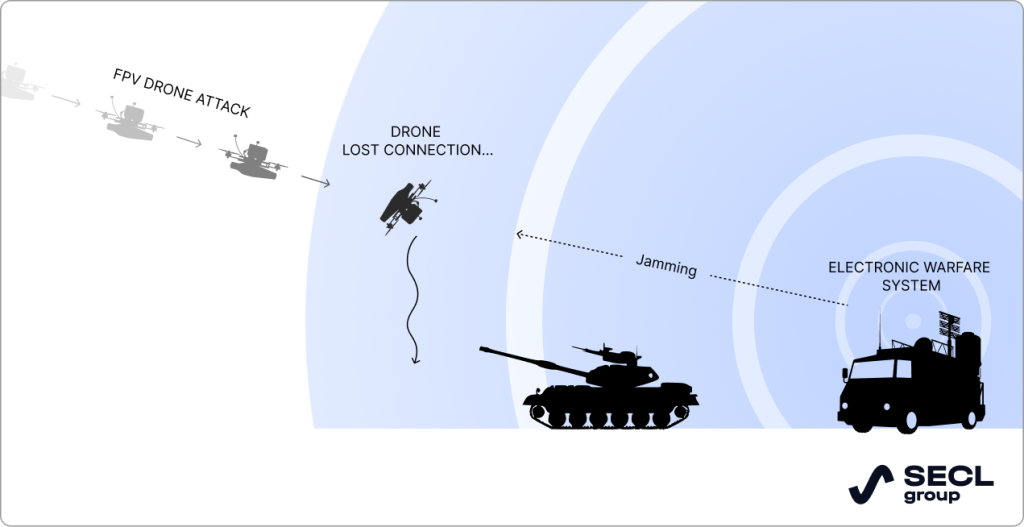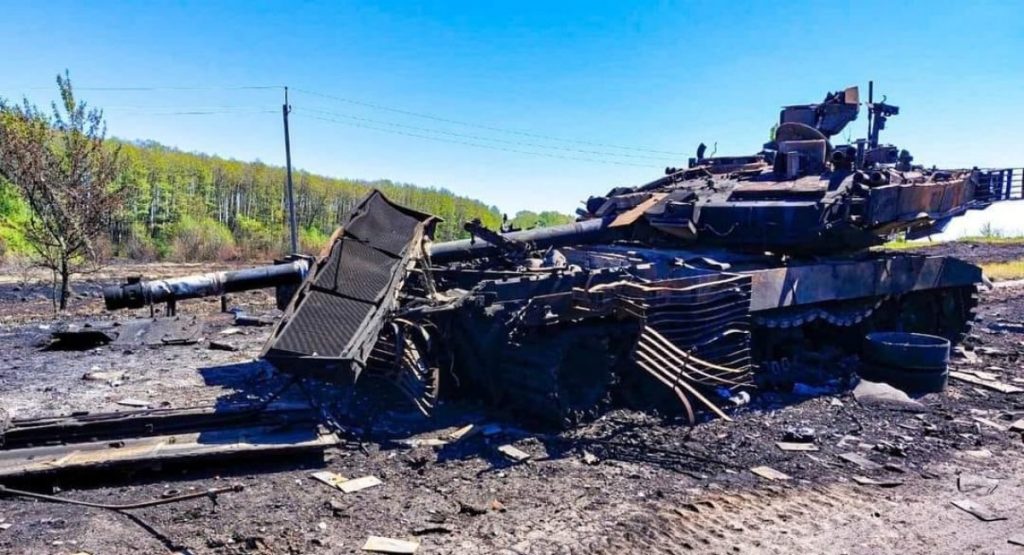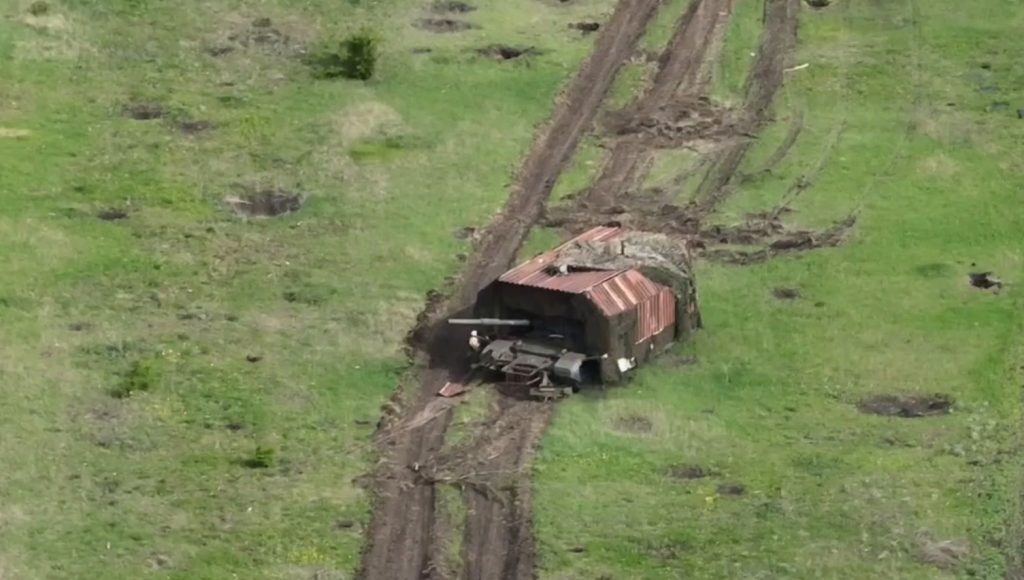- The evolution of military drones: Russian-Ukrainian war (2022-present)
- The future of drone warfare
- How AI and ML Can Be Used in Target Recognition
- How You Can Use ML Algorithms for Target Recognition
- Advantages of AI and ML in Military Drone Development
- Challenges and Limitations
- Conclusion
Military drone deployment has reached an unprecedented scope since the beginning of the full-scale Russian invasion of Ukraine. From small cheap hobbyist UAVs (Unmanned Aerial Vehicles) adapted to military use to large long-range drones, they can perform various tasks and are the most promising weapons.
However, withstanding EW (Electronic Warfare) is still one of the biggest bottlenecks of using them effectively. Even though they are affordable compared to other means of warfare, this doesn’t mean they don’t need to be robust. Using AI and ML to enable autonomous operations and target recognition is the next level of drone evolution that has already started. In this article, we will discuss how military UAVs are already changing the situation on the battlefield and how they can be enhanced with ML and AI military drones.
The evolution of military drones: Russian-Ukrainian war (2022-present)
The extensive use of drones is one of the key characteristics of the Russian-Ukrainian war. Drones help monitor the enemy’s activity, detect and attack targets, guide artillery strikes, deliver munitions to the battlefield, and complete a wide range of other tasks. They are also considered very cost-effective compared to using artillery, airstrikes, or other kinds of missiles.
In the very beginning, Ukraine actively used large UAVs, such as Turkish Bayraktar TB2s to destroy Russian columns of equipment. They have long loiter times and can carry missiles. This helped Ukraine prevent Russian advances. However, Russian air defenses soon became stronger and Ukraine had to adapt to it.
Since the summer of 2022, the active employment of first-person view (FPV) drones has begun. These are the small, fast drones that were initially employed for commercial use (Mavic DJI). However, they can be adapted for the battlefield. For example, you can enable them to carry and drop missiles, such as RPGs, grenades, mines, etc. After a munition has been attached, they can also be used as kamikaze drones and attack the target itself.
Now, both sides are working on improving drone technologies and growing their production and procurement. For instance, Ukraine has fostered domestic drone manufacturing. They produce unique types of drones that can attack targets at extremely long distances or carry powerful missiles. They also often implement night-vision technologies.
At the same time, Russia partners with Iran for purchasing and mass-producing the Shahed-136. It is a long-distance kamikaze drone Russia uses to attack the energy infrastructure all around Ukraine.
The key role of UAVs was officially acknowledged in February 2024, when Ukrainian President Volodymyr Zelenskyy launched a new military branch: the Unmanned Systems Forces, which is completely focused on working with aerial, ground, and sea drones. Days later, his government announced that Ukraine was planning to manufacture over a million drones by the end of 2024.
Ukraine has also recently started using drone interceptors. Their task is to automatically catch the enemy drone. This is difficult for humans controlling such interceptors, because UAVs are fast and require excellent reactions.
War in Ukraine is now a testing ground for various drone technologies and their effectiveness. Since the adoption of UAVs has grown, both armies actively implement multiple anti-drone measures. From primitive means, such as installing nets and shells on armored vehicles, to more sophisticated ones, such as improving EW and jamming technologies, they all hinder the effectiveness of UAVs on the battlefield.
The future of drone warfare
We’re able to predict the future evolution of military drones based on our experience in drone app development and the challenges that now arise in using UAVs for military purposes. For example, now FPV drones are highly dependent on secure data transmission and communication. EW or jamming signals often disrupt video transmission or lead to losing overall control of the drone.
This highlights the need for implementing more resilient communication protocols that improve UAVs’ resistance to jamming signals. Robust cybersecurity measures are critical to protect against EW suppression, being hacked, landed by an enemy, or turned against friendly forces.
That’s why enabling more autonomous operations is essential to complete different missions successfully. AI military drones with autonomous decision-making capabilities will be especially helpful if you need to operate under robust EW means. As they have no active communication channel with an operator, there is simply nothing to jam or hack.
AI helps UAVs make decisions themselves with minimum to no human intervention. It allows the processing of vast data amounts to discover and prioritize targets. This results in faster and more precise drone strikes and reduced workload of a drone operator. Implementing AI and ML protocols will allow you to distinguish and attack enemy targets, prevent friendly fire, and avoid civilian casualties.
Coordination is another challenge as the attacks of multiple UAVs are used more and more widely, especially for high-priority targets, such as tanks or air defense systems. You can implement AI algorithms to control swarms of military AI drones, perform complex maneuvers, and execute more effective and coordinated attacks. This is a very promising approach since there are no counter-measures for such “smart” UAV swarms yet. (By the way, at SECL Group we have experience in developing drone swarms).
How AI and ML Can Be Used in Target Recognition
Autonomous target recognition is the next step in military drone evolution. While some UAVs already have built-in homing-in functionality, they can’t recognize their targets or make decisions themselves. The operator controls the drone up to the point when the target comes into its sight. The operator then captures the target, which identifies it to the UAV, after which the UAV approaches and attacks the chosen target by itself.
So long as EW jamming systems have not intervened before the operator identifies the target – which is very difficult to do, because the target is usually captured high and EW does not reach there – then the attack will proceed straightforwardly. The bottom line? After a target has been captured, EW is rendered useless, because the target has been captured and human participation is no longer necessary to complete the task.
High-value targets, such as air defense systems or air bases are often protected with EW means. When a drone flies into such an area of protection, the operator loses signal, and the UAV either drops to the ground or follows the last command of an operator.

When enabling AI military drones to make decisions and recognize targets themselves, you eliminate their vulnerability to jamming. It helps execute missions more efficiently, even in cluttered environments and under the impact of EW means. Even though drones, especially DIY FPV ones are relatively affordable and often considered disposable, implementing AI algorithms helps increase their efficiency and reduce the number of lost or hacked UAVs.
Also, you can have different types of drones that attack a range of various machinery and equipment. For instance, tanks can get damaged by UAVs that carry substantial amounts of explosives as they are heavily armored. On the other hand, you may need drones that can hover for a long time in one area to attack air defense systems or artillery as they are constantly changing their location. You can have several AI-controlled military drones focused on the surveillance of different areas, and once one of them comes across a target, it immediately recognizes and attacks it – leaving no time for it to maneuver or drive away.
AI can also enhance the work of surveillance drones. These UAVs need 24/7 data monitoring and constant attention from operators, which is quite challenging to achieve completely manually. AI analyzes the video and spots the target immediately. For example, it can notice camouflaged targets that a person may not have noticed due to fatigue.
How You Can Use ML Algorithms for Target Recognition
ML algorithms can also be used in target recognition in various ways.
You can train your ML models with vast databases of images and videos. They view targets in various conditions and from different angles to recognize an enemy’s troops and machinery and differentiate them from friendly ones.
The databases may include images in different lighting, including those produced using infrared night vision or thermal imagers, camouflage and covering techniques, identification signs, and weather conditions. Based on its given parameters, the drone will recognize even well-masked military equipment by detecting its parts in real time.
The training of ML models involves different levels. First, they memorize what different machinery looks like and differentiate between sub-types. You need to train them to recognize tanks, artillery systems, armored personnel carriers, etc.
Then, they have to be able to detect the optimal weak spots for conducting effective attacks. For instance, let’s take the Russian tank T-90M “Breakthrough”, which is believed to be the most advanced battle tank. However, a huge bug was discovered once it became a target for drone attacks.
Even if there is minor damage to the tank, the turret starts turning uncontrollably. This indicates a disastrous flaw in the T-90M’s electronics. The tank can no longer return fire accurately and simply becomes a sitting duck target for Ukrainians. After the UAV attacks, the vehicle will require substantial repair, if it’s even repairable at all. Currently, there are numerous abandoned T-90Ms on the battlefield, which have been destroyed by drone bombs.

So, when you develop ML-based models for this specific tank, you can train drones to attack it in various weak spots, and the drone will determine where most damage will be done. When training drones, you need to add data about the weakest spots of different armored vehicles and enable the UAVs to recognize them in various models. Often, these are:
- vents for air circulation and vision ports;
- the underside of cars and most armored vehicles;
- the engine deck on the sides or rear;
- turret roof of even heavily armored machinery.
ML-powered drones can have different levels of autonomy. For instance, when implemented in the UAV, it can recognize and highlight potential targets based on data received through its cameras and sensors. Its operators can then see the targets on the screen and, either guide further activities, or stand off and allow the drone to make decisions and prioritize targets by itself.
Now both sides are responding to this new threat by modernizing their wheeled and tracked equipment, by adding counter-drone measures to them. For example, the Russians have installed giant superstructures on some tanks and other equipment. They are called turtle tanks because the cover is large, hiding the most vulnerable parts, and resembling a turtle’s shell. Heavy machinery is often a number-one priority for drone attacks and such covers make it less susceptible to them.

ML algorithms can also be used for recognizing camouflaged or covered armored vehicles, and then deciding the best uncovered places to strike. Whilst you can train them to recognize covered machinery and fly past, the drone can also be trained to find spaces in cover and fly inside them to drop bombs or attack in kamikaze style. Not only does this require highly maneuverable military drones with AI, but also sophisticated algorithms to detect the uncovered spaces and decide whether they are worth attacking based on the predicted level of damage.
For complex tasks like this, you may require an engineering team that has experience in drone control app development and implementing AI and ML in these projects. You can partner with a team based in Ukraine, not only to add these advanced capabilities for UAVs, but also to see how they perform in real-life situations on the battlefield.
Advantages of AI and ML in Military Drone Development
AI and ML are revolutionizing target identification and the overall development of military drone technologies. Now, Russia and Ukraine are working on these technologies and have started using them on the battlefield. For instance, Ukraine employed AI-powered UAVs for successful high-precision strikes on Russian refineries that are located deep into Russian territory. Russia utilizes Lancet drones with AI capabilities to attack high-priority targets, such as aircraft and Leopard tanks.
Real-time data analysis and quick decision-making allows for target detection and identification. This way, you receive a broad understanding of the situation almost right away, allowing you to stay informed in different situations. Autonomous decisions can be made almost instantly, especially when you have robust and well-trained AI and ML models.
Detecting pre-programmed targets, such as armored vehicles, tanks, and even people can be completed much faster with AI and ML than manually. This saves operators substantial time on target search and allows them to concentrate on other, more important tasks.
Additionally, AI and ML models can take into account various factors, such as camouflage and weather conditions to make targets more recognizable. This leads to significantly more accurate target identification compared to those completed by human operators.
Challenges and Limitations
Although there are substantial benefits to using these technologies, there are some cons you need to take into account when you decide to add AI and ML capabilities to military drones.
The effectiveness of these technologies relies heavily on the quality and diversity of the given training data, such as images and videos of the enemy’s machinery. Biases in the information can lead to misidentification of certain targets, friendly fire, or civilian casualties. Careful data curation and ongoing improvement efforts are essential in training AI and ML models adequately. Ultimately, you need thorough and well-organized data preparation to achieve positive outcomes from UAV usage.
The development of drone technologies also triggers advances in countermeasures. Adversaries can develop tactics to deceive AI-based drones, or use decoys or improved camouflage. That’s why you will constantly have to review your target identification algorithms and adapt them to evolving anti-drone tactics.
AI systems can also be susceptible to hacking or manipulation. That’s why you need to pay a great deal of attention to having robust multi-level security measures while developing such systems to avoid disastrous outcomes.
Finally, there is no doubt that adding AI and ML capabilities also increases the cost of a UAV. For instance, the average cost of a basic FPV drone is $300-400 and it may increase up to $500-600. The use of these advanced technologies requires considerable investment and you should be aware of this.
Conclusion
Drones are now reshaping the military landscape and the Russian invasion of Ukraine is one of the most vivid examples of their evolution. The use of AI and ML for enhancing target recognition capabilities is an inevitable step in military UAV evolution.
At SECL Group, our team has vast experience in developing various drone systems, including those related to drone swarms. If you are interested in implementing AI-based target recognition capabilities in your UAVs, feel free to get in touch with us to discuss the details.